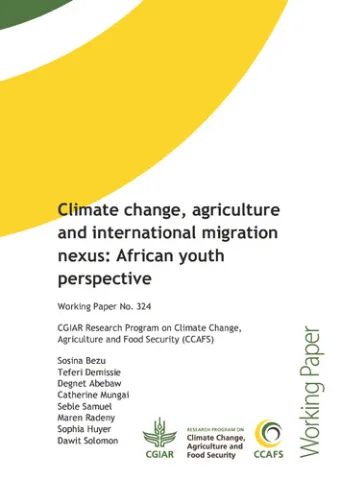Climate change, agriculture and international migration nexus: African youth perspective

Abstract
Climate change is expected to contribute to the migration of tens of millions of people in the coming decades. While some migration will be caused by sudden-onset events, such as floods, the majority will be due to the long-term impact of climate change on livelihoods. Agrarian countries are particularly vulnerable to this climate change impact as the majority of their people depend on environmental resources and vulnerable ecosystems for their livelihoods.
This study explores the complex nexus between climate change, agriculture and international migration in East Africa, with a focus on the youth perspective. We provide an extensive review of the empirical literature on the climate-migration link. Based on regional climate modeling, we also show the trends of climate extremes for East Africa and provide climate projections for the coming decades. Our study also examines the quantitative relationship between climate variables and migration stock for case study countries.
Results from our climate model show that the East African region will experience longer and more frequent droughts than those associated with the current climate, suggesting that agricultural livelihoods in East Africa will become more vulnerable in the coming decades. The region experienced significant growth in outmigration in the past few decades and climate change is likely to accelerate this migration trend. Our quantitative analysis provides suggestive evidence to support this hypothesis. The analysis shows that a higher number of average dry days for a country is positively correlated with higher stock of emigrants from that country.
The prospect of youth international migration from East Africa is high and likely to increase with climate change. East Africa’s youth population is not only the highest in the continent, but is more likely to be unemployed, less encumbered with family responsibilities and have more education than the previous generation. All of these factors support the likelihood of higher youth migration in the context of climate change.
